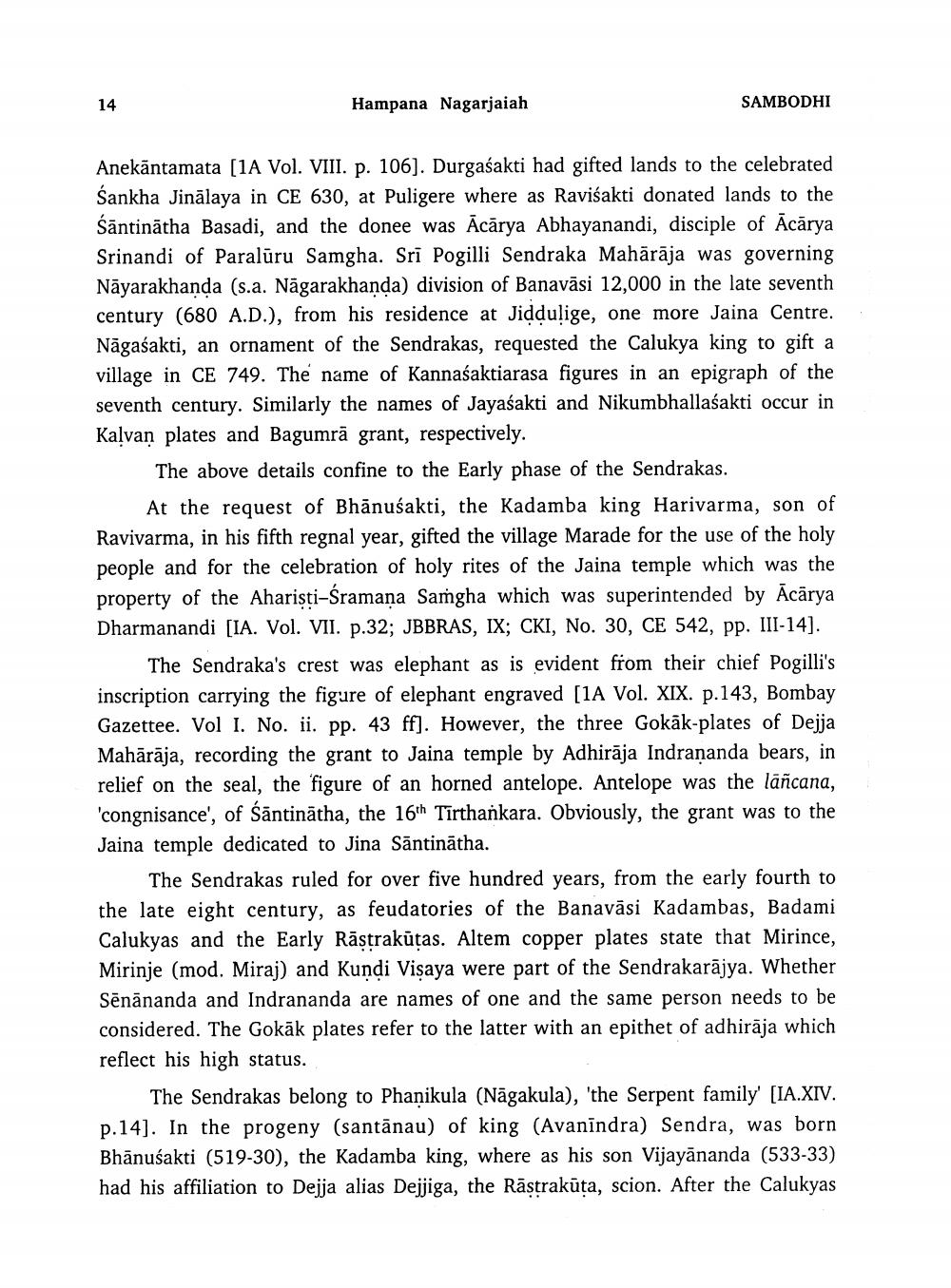________________
14
Hampana Nagarjaiah
SAMBODHI
Anekāntamata (1A Vol. VIII. p. 106). Durgasakti had gifted lands to the celebrated Sankha Jinālaya in CE 630, at Puligere where as Ravisakti donated lands to the śāntinātha Basadi, and the donee was Ācārya Abhayanandi, disciple of Ācārya Srinandi of Paralūru Samgha. Sri Pogilli Sendraka Mahārāja was governing Nāyarakhanda (s.a. Nāgarakhanda) division of Banavāsi 12,000 in the late seventh century (680 A.D.), from his residence at Jiddulige, one more Jaina Centre. Nāgaśakti, an ornament of the Sendrakas, requested the Calukya king to gift a village in CE 749. The name of Kannaśaktiarasa figures in an epigraph of the seventh century. Similarly the names of Jayasakti and Nikumbhallaśakti occur in Kalvan plates and Bagumrā grant, respectively.
The above details confine to the Early phase of the Sendrakas.
At the request of Bhānusakti, the Kadamba king Harivarma, son of Ravivarma, in his fifth regnal year, gifted the village Marade for the use of the holy people and for the celebration of holy rites of the Jaina temple which was the property of the Aharisti-Śramana Samgha which was superintended by Ācārya Dharmanandi [IA. Vol. VII. p.32; JBBRAS, IX; CKI, No. 30, CE 542, pp. III-14].
The Sendraka's crest was elephant as is evident from their chief Pogilli's inscription carrying the figure of elephant engraved [1A Vol. XIX. p.143, Bombay Gazettee. Vol I. No. ii. pp. 43 ff]. However, the three Gokāk-plates of Dejja Mahārāja, recording the grant to Jaina temple by Adhirāja Indrananda bears, in relief on the seal, the figure of an horned antelope. Antelope was the lāñcana, 'congnisance', of Sāntinātha, the 16th Tīrthankara. Obviously, the grant was to the Jaina temple dedicated to Jina Säntinātha.
The Sendrakas ruled for over five hundred years, from the early fourth to the late eight century, as feudatories of the Banavāsi Kadambas, Badami Calukyas and the Early Rāstrakūtas. Altem copper plates state that Mirince, Mirinje (mod. Miraj) and Kundi Visaya were part of the Sendrakarājya. Whether Sēnānanda and Indrananda are names of one and the same person needs to be considered. The Gokāk plates refer to the latter with an epithet of adhiraja which reflect his high status.
The Sendrakas belong to Phanikula (Nāgakula), 'the Serpent family' [IA.XIV. p.14]. In the progeny (santānau) of king (Avanīndra) Sendra, was born Bhānusakti (519-30), the Kadamba king, where as his son Vijayānanda (533-33) had his affiliation to Dejja alias Dejjiga, the Rāstrakūta, scion. After the Calukyas




